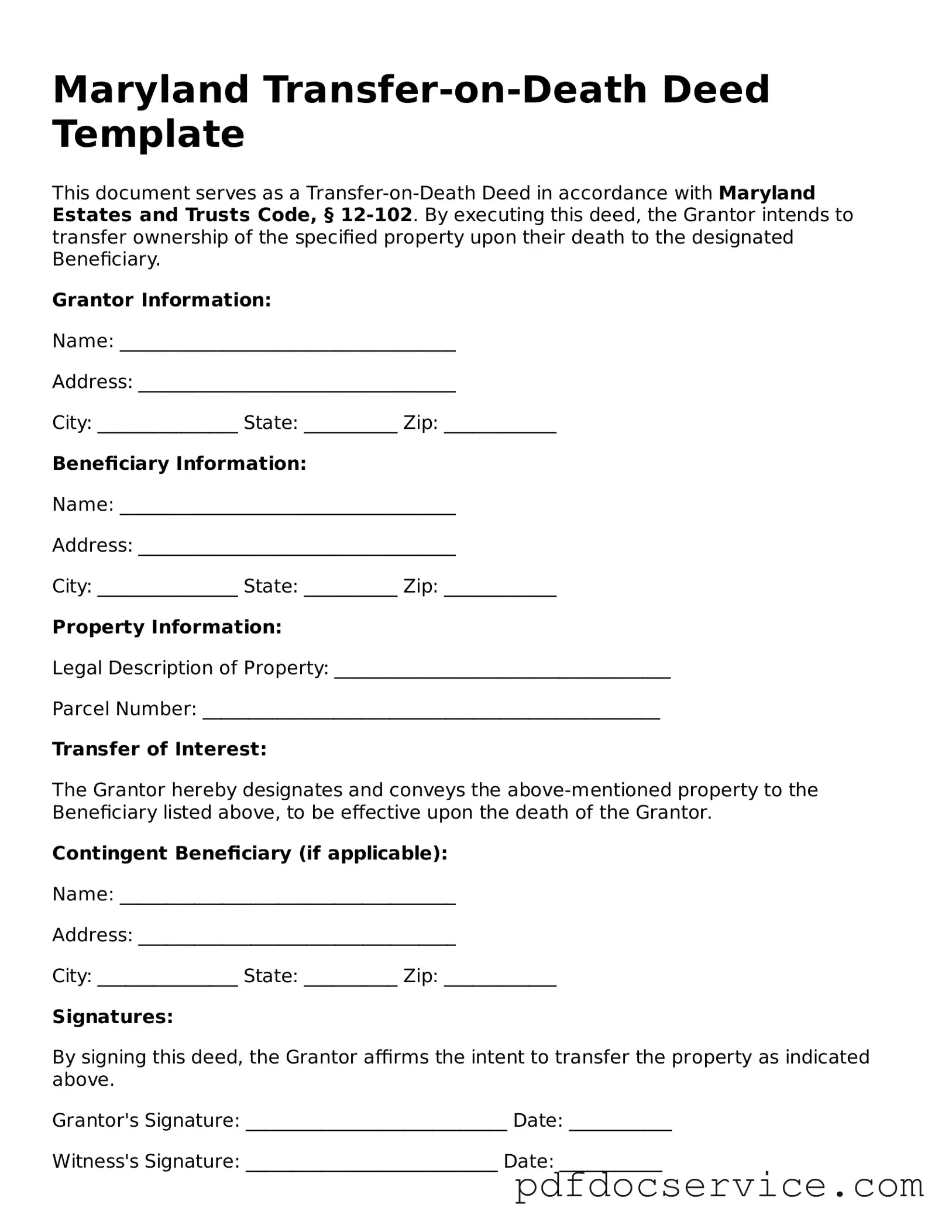Printable Transfer-on-Death Deed Template for Maryland
The Maryland Transfer-on-Death Deed is a legal document that allows property owners to transfer their real estate to designated beneficiaries upon their death, avoiding the probate process. This form offers a straightforward way to ensure that loved ones inherit property without the complications often associated with traditional wills. Understanding how to properly complete and execute this deed can provide peace of mind for property owners and their families.
Open Transfer-on-Death Deed Editor
